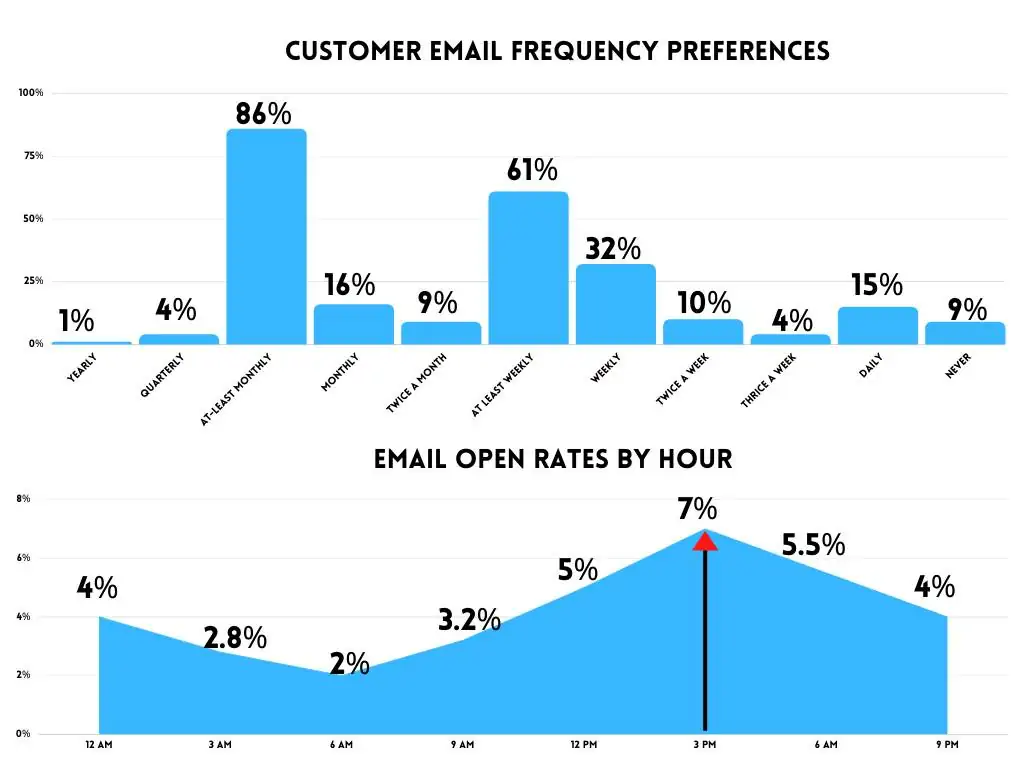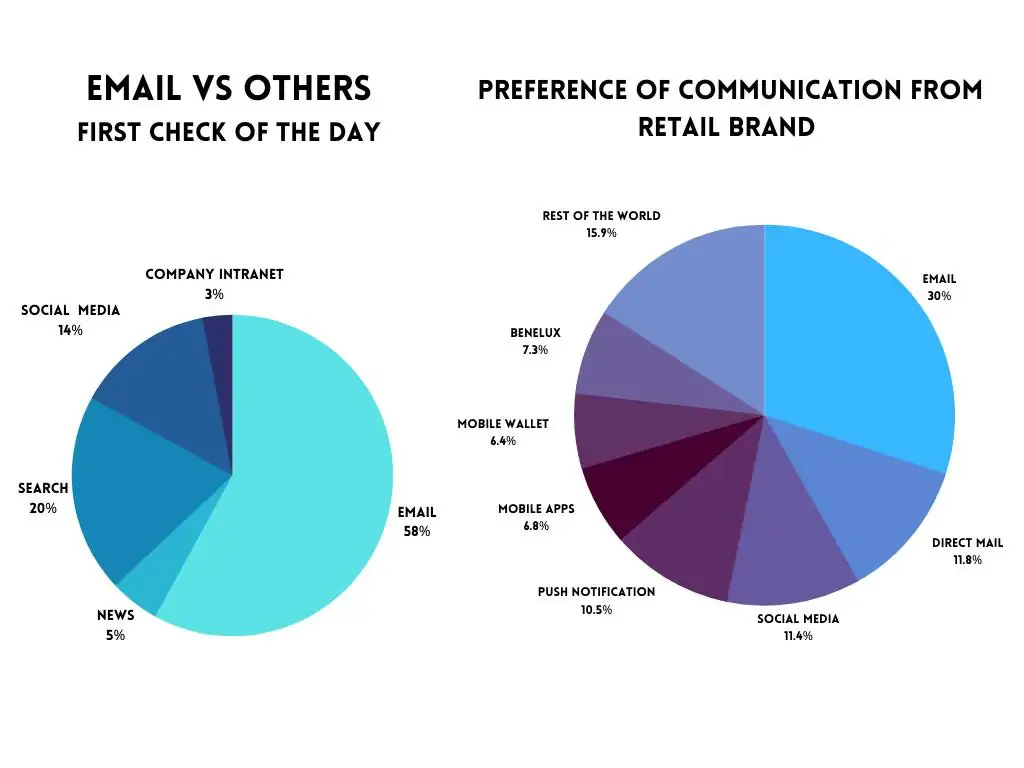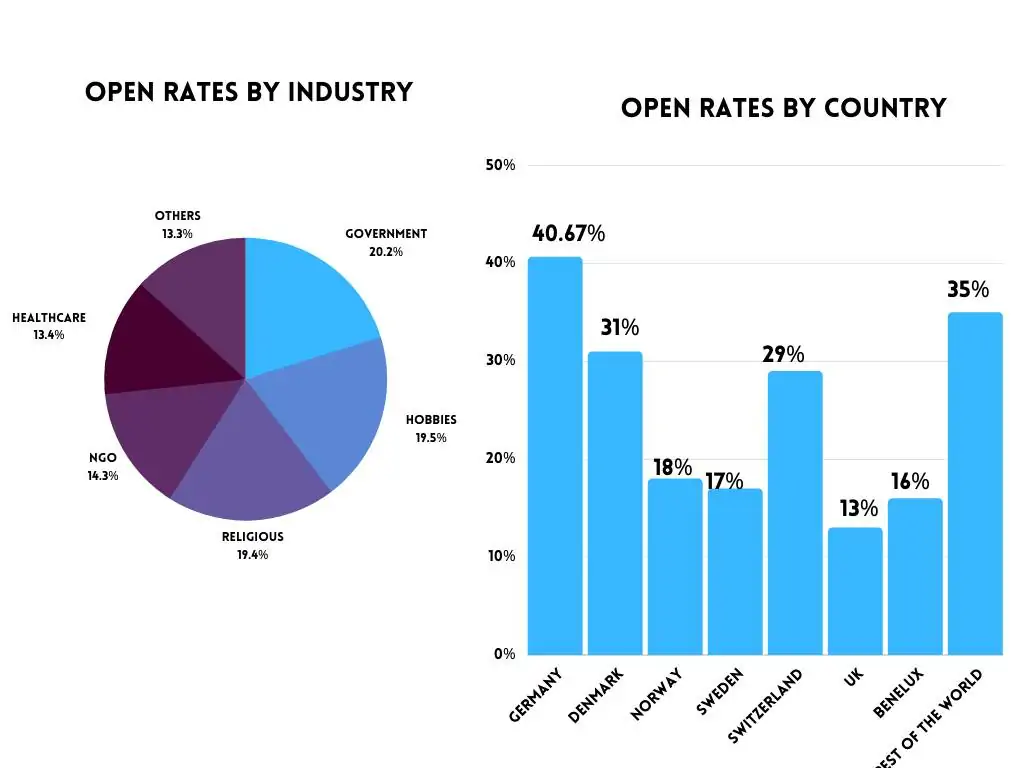When digital marketing experts go camping, they sit around the fire, roast marshmallows, and share marketing horror stories and myths. Some of them are so scary and untrue, it makes their skin crawl.
To avoid the horrors of email marketing campaigns based on myths rather than facts that can affect your business, we’ll bust some popular myths.
Brace yourself – some drastic changes in email marketing campaigns might be due!
Has email marketing risen from the dead after it was supposedly killed by social media marketing? Are email marketing professionals working with ashes? Should you bury all your email marketing efforts? Was that email marketing for beginners course you took to no avail?
Don’t let these questions haunt you – we have all the answers you need below!

Email Marketing is Dead
With almost half of the world’s population using email, claiming that email marketing is dead raises a few eyebrows. However, just because people shoot messages on email doesn’t mean they use it for marketing purposes.
Let’s see what the statistics say:
• In 2019, more than 293 billion emails were sent and received on a daily basis and is expected to grow to a whopping 347 billion by next year.
• 81% of professionals trust the power of email in their customer acquisition efforts.
• The average return for every $1 invested in email marketing is $42.
• Email marketing is the third most popular content distribution channel, right after social media and a company’s website.
Facts speak for themselves. There might be a lot of talk about social media having the upper hand, but don’t trust everything you hear. Promoting your business by email is guaranteed to bring you more customers, but only if done right.
Fact: Email marketing is NOT dead and as the tables turn, it might as well be immortal!

Millennials and Generation Z Don’t Use Email
The majority of Gen Z was born in the era of social media. With a new social media network becoming widely popular every year, they seem to spend a lot less time on old platforms, like Facebook. Instead, they are moving on to the next shiny thing, like, say, TikTok.
Does this mean that they’ve ditched email altogether?
According to research, younger generations:
• Use social media to connect with their friends and family, share important life events, or brag about their latest trip.
• Prefer to communicate with their friends, family, colleagues, employees via anything but email.
• Would like to receive promotions from brands via email.
• Check the Promotions tab at least once daily (53% of millennial Gmail users).
• Have exactly zero unopened emails (16%) or less than five unread emails in their inbox (23%).
• Are more likely to be influenced by promotional emails than older subscribers.
Yes, the youth prefer social media. At the same time, they’d like to be targeted by businesses on their email – rather than on social media. Considering they communicate by other means, their inboxes are relatively empty. As such, they leave extra room for businesses to send promotional emails. The chances of them actually opening and reading the emails they receive are ever in your business’s favor!
Fact: Younger people still use email for purposes that match yours. Create a strong email campaign that’ll engage the younger demographic – he who owns the youth owns the future!
Using the Word ‘Free’ is a Red Flag
You should pay extra attention to the language you use in your email copy. Believe it or not, there are trigger words that can send your email directly to the spam folder. In previous years, there has been a heated argument among digital marketing experts regarding buzzwords that supposedly trigger the email service provider’s filters.
‘Free’, ‘guarantee’, ‘cheap’, ‘act now’, ‘instant’, ‘urgent’ are among the many that made it on the list of words to avoid. Some will say that you should stay away from these words only in your subject lines. However, others argue that you shouldn’t use them in the email body text either. Additionally, there have been a lot of warnings regarding the use of exclamation points and caps.
There’s a lot of email data that proves the contrary, and the reality is – your emails end up in spam because you:
• Have low engagement rates
• Don’t know your audience or are targeting the wrong people
• Weren’t permitted by the recipient to send them emails
• Are relying on an email marketing service whose servers have been used for spam
• Have a lot of inactive users on your email list
• Are using misleading subject lines
Although these are the main reasons that can land you in the spam folder, you should be very careful with wording your offer. If your audience isn’t responding well to certain words or phrases, simply, don’t use them anymore.
But, if you see that the engagement rates are higher when you use some powerful words, don’t shy away from them. What works more to your advantage is the fact that email browsers won’t perceive them as spam. If you’re unsure about the words that increase or decrease the engagement, you can always conduct A/B testing.
Fact: Plead the first – feel free to use ‘Free’ in your emails. After all, it’s a free world!
Subject Lines Have the Biggest Impact on the Subscribers’ Opening Your Email
Subject lines are among the most important components of an email. Even so, they’re not the main culprits for either high or low open rates. Your sender name has the biggest impact on the recipient’s decision to open or skip your email.
Plus, segmentation is also crucial when it comes to how many people will open your email.
When it comes to subject lines, there’s more than meets the eye. It turns out they can affect all metrics, including conversion – but only if written properly.
Here are the main takeaways when it comes to killer subject lines:
• They should be short, without obvious clickbait.
• Personalized subject lines with the recipient’s name can lift open rates by 2.6%.
• Using keywords can improve the quality of the line.
While this myth is partly true – since subject lines are extremely powerful in triggering people to open your email – they are not the most detrimental factor.
Fact: A recognizable, reputable sender name is guaranteed to increase open rates more than subject lines can.
The Bigger the Email List, the Better the Response
Many people believe that quantity translates to profitability, and they couldn’t be farther from the truth. In an effort to build a larger audience, many brands opt for the worst – purchasing email databases.
What they don’t know is that the extra 1,000 people on a purchased list do them more harm than good.
The logic behind this is simple:
• They are not your target audience
• Many of them might be inactive
• You don’t have their consent to send them emails
Not only will you spend money on useless email data, but you’ll also risk your engagement rate and a possible lawsuit. Instead, focus on gradually building your own email list and try to filter it regularly. Keeping inactive email contacts on your list will drastically damage your open rate. Your email list is as good as the leads on it!
Fact: Less is sometimes, indeed, more – when it comes to email lists, you need the right type of contacts, not any contact you can get!
Unsubscription is Not the End
If you’ve lost a few subscribers, what’s the point of continuing your email campaign?
According to experts, people who unsubscribe are doing you a favor, and here’s the reasoning behind it:
• Having subscribers unsubscribe helps you maintain the hygiene of your email list.
• A clean list helps your CTR and conversions.
• The more people unsubscribe, the more info you have on how relevant your emails are to different groups.
• Unsubscribers are a great indicator of where your email campaign could use some improvements.
• If someone unsubscribed, they simply weren’t your target audience, to begin with.
However, it’s important that you keep the unsubscription rate low. Sometimes, people leave your email list because you bore or annoy them with too many emails. If the unsubscription rate is constantly on the rise, you might want to rethink your digital email marketing strategy.
Fact: When one door closes, another one opens. So, having people unsubscribe can teach you what your audience wants, needs, and expects. Unsubscribes = new possibilities to improve – not failure.
Images Are Game-changers
Let’s be real, people are lazy. If they can find a simpler way to do things, without much effort, that’s what they’re gonna do. Images are gaining in popularity for this simple reason. After all, one glance at an image and you can skim through the contents without having to read long texts. But, do email recipients prefer visuals over text?
It seems that:
• Emails without images have a CTR of 1% more than emails with images.
• More than 60% of clients block images by default.
• An email with images is larger in size and therefore it takes more time to load.
• The contents of your email are not searchable if you embrace an only-image approach.
While people enjoy images in long texts they read online, keep in mind that your emails shouldn’t be that lengthy, to begin with. Good design is important, yes, but you can structure your email to look pleasing without using images. Keeping it short, on point, and dividing the body of your email into short sentences and paragraphs will do the trick. Add a few emojis for a pop of effect and color – and you’re good to go.
Fact: An image here or there won’t do any damage. But, saying images are game-changers is an overstatement you should not focus your email campaign around.
Never Use the Same Email Twice
Sending the same email twice shows that you’re unprofessional, or that you don’t truly care about your recipients. This brings us back to the previous point – it’s all matter of laziness.
A lot of effort goes into writing a winning email, making the perfect template, and planning your CTAs. So, why not make the most out of it? Get it out there in the world, give the people who missed it another chance to hear what you were saying. Just because the open rate is low doesn’t necessarily mean that the recipients ignored it on purpose. Maybe your subject line wasn’t good enough, or maybe, they’ve just been too busy or on a vacation.
Remailing doesn’t do any harm. As a matter of fact:
• Sending the exact same email twice in a row can increase the open rate by 14%.
• Changing the subject line but keeping the same copy results in a 60% lift in the open rate.
Fact: Use remailing to reach more of your target audience. But, never use the same email twice on subscribers who have already opened it.
There’s a Magic Time Window for Sending Emails
You might’ve heard that Monday morning is the best time to send emails, but your coworker claims Tuesday noon promises better results. Well, one study shows that emailing on Fridays increases the open rate, but another one suggests that sending emails on Saturdays is your best bet at creating the desired engagement.
To clear the air, here are the stats on open rates by day of the week:
• Monday – 10.4%
• Tuesday – 10.7%
• Wednesday – 10.7%
• Thursday – 9.4%
• Friday – 10.3%
• Saturday – 9.4%
• Sunday – 8.5%
The truth is, you can’t trust all statistics. What works for one brand may significantly differ from what works for yours. Instead of shooting blanks, perform A/B testing over and over again. This testing and retesting will let you see which days of the week and times of the day work the best for your email list.
Fact: Magic happens when you create it – do your research to find out which timing works best for your business.

Tailor Your Digital Email Marketing Campaign to Your Needs
The most important tactics for email marketing for beginners work differently from one brand to another. There’s no such thing as one-size-fits-all when it comes to digital email marketing, so don’t trust everything you read online.
What is normal for the spider is chaos for the fly. In other words, don’t rely on other people’s research when it comes to what the best approach to email marketing is.
And for the love of business marketing, don’t fall for any myth being thrown out there!
